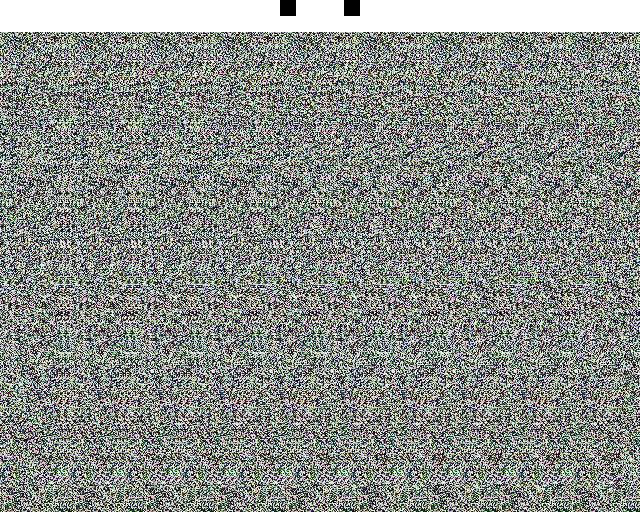
The first RDS (random dot stereogram) was invented by Dr. Bela Julesz in 1959 as an experiment to test stereopsis, the ability to see in 3D. By using a random dot pattern, Julesz eliminated the depth cues that are inherent in recognizable images.
In 1960, Julesz tested binocular depth perception using computer generated patterns. Along with J.E. Miller, Julesz was "the first to show clearly that a sense of depth could arise purely from stereopsis, without relying on other cues such as perspective or contours. They used random patterns of dots which, although meaningless to single eye viewing, nevertheless created a depth impression when viewed in a stereoscope." These were generically called autostereograms, later shortened to stereograms.
Before that, stereoscopic effects had been known about, but the techniques used to create them were too crude to allow for effective imaging. Stereoscopic phenomena seems to have first been discussed by Charles Wheatstone, in 1832. In 1851, the London Society of Arts held the Crystal Palace Exhibition, which six million people attended and had the opportunity to witness Sir David Brewster demonstrate his stereoscope. In the late 1940ís, simple SIRTS (Singe Image Random Text Stereograms), like the example below, were manufactured with a typewriter for encryption purposes.
/=-- Y+-z-/=-- Y+-z-/=-- Y+-z-/=-- Y+-z-/=-- Y+-z-/=-- Y+-z-/=-- Y+-z-/=-- Y+-z *wm @m@w *wm @m@w *wm @m@w *wm @m@w *wm @m@w *wm @m@w *wm @m@w *wm @m@ O@=*+z @:/O@=*+z @:/O@=*+z @:/O@=*+z @:/O@=*+z @:/O@=*+z @:/O@=*+z @:/O@=*+z @: :*/- :m: *:*/- :m: *:*/- :m: *:*/- :m: *:*/- :m: *:*/- :m: *:*/- :m: *:*/- :m: )*/O@-Y|- )*/O@-Y)*/O@-Y)*/O@-Y)*/O@zO@)*/O@z zO@)*/O@zO@)*/O O@zO@*/O O@zwO@*/ *):O*zO((@*):O*zO*):O*zO*):O*zO*):O*mO*z):O*mO(O*z):O*(O*z):+:O*(O*):+:O*()O*): m))@z@-+m~m))@z@-m))@z@-m))@z@-m))@z*@z@-m@z*@z@@@-m*@z@@@m@-m*@z@@m@-m*@z @@m@ z:+*O-mm*Yz:+*O-mz:+*O-=O-mz:+*O-=O-mz:+*O--mz:+***-mz:+*)***-mz:+****-mz:-+*** m@: @:~+( m@: @:~m@: @: @:~m@: @: @:~m@: @: @m@: @: @m@/@: @: @m@/@ @: @m@+/@ @ -+(*m- o-)-+(*m- -+(*m-Om- -+(*m-Om- -+(*m-Om-+(*m-Om-+-+(*m-Om-+-+*m-Om-+|-+*m m*m |== *m*m |=m*m |=m*m |=m*m |=m*m |=m*m*m |=m*m*m |=m*m+*m + YY/ + ) + YY/ ++ YY/ ++ YY/*Y/ ++ YY/*Y/ ++ Y*Y/ ++-+ Y*Y/ ++-+ YY/ ++-+* YY/ zY=) w ~/YzY=) w zY=) w zY=) z) w zY=) z) w zY=z) w zmzY=z) w zmzY=) w zmz|Y=) + oY*:+:ow+ oY*:++ oY*:m*:++ oY*:m*:++ oY*:m*:+oY*:m* *:+oY*:m* *:+Y*:m* *z:+Y* @ z++ *zo)@ z++ *@ z++ w+ *@ z++ w+ *@ z++ w+ *z++ w+ + *z++ w+ + *++ w+ +* *++ ()=ww+ *O()=ww+ ()=ww+-w+ ()=ww+-w+ ()=ww+-w+ =ww+-w+w+ =ww+-w+w+ ww+-w+w=+ ww z +wO z +z + +z + +z + + + = + + = + + = ( + o +@~@= ozo +@~@=o +@~@+~@=o +@~@+~@=o +@~@+~@=+@~@+~@~@=+@~@+~@~@=@~@+~@~z@=@~ )(w=++ +~z)(w=++ +~z)(w=++ +~z)(w=++ +~z)(w=++ +~z)(w=++ +~z)(w=++ +~z)(w=++ +~ mz- O @ =mz- O @ =mz- O @ =mz- O @ =mz- O @ =mz- O @ =mz- O @ =mz- O @
One of the first examples of a stereoscopic image was seen by Julesz when he was a radar engineer. He tells us that
there seems to be a deep valley in the middle of the river. This caused great confusion in the wartime RAF but no-one could make up an explanation to the phenomenon because at the time there was no knowledge about stereoscopic processes working without monocular pattern recognition."
Fascinated by this phenomena, Julesz began to research stereoscopic images. The following ,about Julesz, is from The Magic Eye, 1993, N.E. Thing Enterprises, Andrews and McMeel:
In the following years, others continued using random dot, stereographic pictures in their work. In time they found new and better ways to create these interesting illusions. Unlike the early SIRTS (Singe Image Random Text Stereograms), newer techniques like RDS (Random Dot Stereograms) and SIRDS (Single Image Random Dot Stereograms) were created. These new methods used repeated pictures that were not just a jumble when viewed without with any special technique. At this point, the research in stereographic imaging was closely tied to research in Anaglyphs (red and blue images viewed with special "3d glasses" to produce a 3d effect). Computer aided designs, along with newer, better algorithms, allowed higher quality work with stereograms, and the resulting images became more and more detailed.
Finally, in the early 1990's, stereograms met the public in the form of art and computer software. The commercial aspects of stereograms began with companies like Nvision Grafixm, Micro Synectic, and NE Thing (which I used to produce the following picture as well as a few others found here).

These companies produced products with names as varied as Magic Eye and Stareo. All of these companies and names, however, are simply selling stereograms.
What does the future hold for stereograms? It's hard to tell, but we have speculated on the future of multidemionsal representation here.
|
| ||
BACK |
|
NEXT |